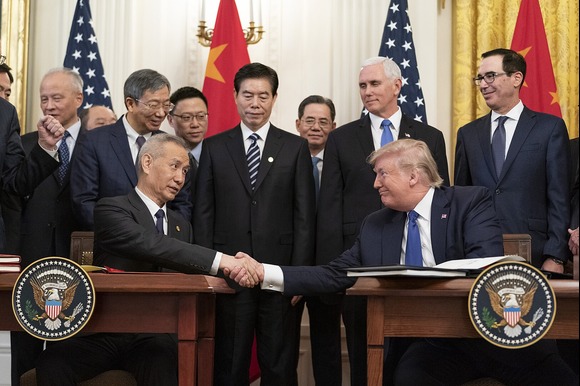The US and China have launched a new round of trade negotiations, raising expectations that the world’s two largest economies could soon agree to a 90-day extension of their ongoing tariff truce.
The meetings, currently taking place in Sweden, are being led by US Treasury Secretary Scott Bessent and Chinese Vice Premier He Lifeng. These discussions come just hours after US President Donald Trump revealed a framework agreement on tariffs with the European Union.
The existing 90-day ceasefire between Washington and Beijing — which has seen both sides temporarily ease tariffs on each other’s imports — is set to expire on 12 August. That truce followed previous high-level negotiations between the two nations held earlier this year in Geneva and London, amid escalating trade tensions.
Since Trump’s return to the White House in January, both countries have hiked import levies on one another to more than 100%. The truce provided a temporary pause in that escalation, and officials on both sides now appear keen to avoid a renewed trade war.
Last week, Secretary Bessent told reporters that talks with China were “in a very good place” and suggested that the new discussions could result in a second truce.
On Monday, the South China Morning Post, citing sources familiar with the matter, reported that both governments are expected to agree to extend the trade truce by another 90 days.
Meanwhile, the Financial Times reported that Washington has frozen certain export restrictions on advanced technology products to China — a move designed to prevent jeopardizing negotiations and to help pave the way for a possible meeting between President Trump and Chinese President Xi Jinping later this year.
Technology exports, especially high-performance semiconductor chips used in artificial intelligence (AI), have become a flashpoint in the ongoing dispute. US national security officials have voiced concerns that such technology could strengthen China’s military capabilities and give its companies an edge in global innovation races.
The BBC has reached out to the US Treasury Department, the US Commerce Department, and the Chinese embassy in Washington for comment on the latest developments.
The renewed talks between Washington and Beijing come on the heels of several significant trade deals the US has reached with other major partners in recent days.
On Sunday, President Trump and European Commission President Ursula von der Leyen announced a framework agreement, bringing an end to a prolonged trade standoff between two of the world’s largest economic blocs.
Last week, Trump also revealed a “massive” trade agreement with Japan. Under that deal, Tokyo is set to invest $550 billion (£407 billion) in the US, and its exports to the American market will be subject to a 15% tariff — significantly lower than the 25% rate Trump had previously threatened.
In addition to deals with the EU and Japan, the US has also concluded tariff agreements with the United Kingdom, Indonesia, and Vietnam. Among these, Britain has secured the lowest tariff rate to date, with a 10% levy on its goods entering the US.
While a major breakthrough in this week’s US-China discussions is not anticipated, the strong likelihood of a truce extension has lifted hopes that global trade stability will be preserved, at least for the near term, and that fresh tariff disruptions can be avoided.






